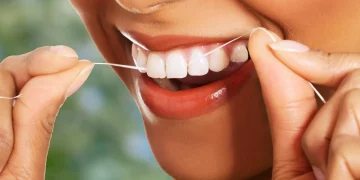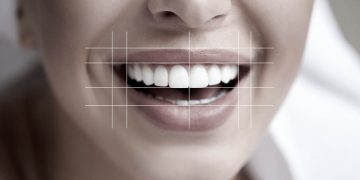Introduction: The Desire for a Bright, White Smile
A bright, white smile is often associated with youth, beauty, and health. It’s no wonder that so many people look for ways to achieve or restore a sparkling smile. Over time, however, our teeth can naturally become discolored due to aging, diet, lifestyle choices, and certain medications. Fortunately, modern dentistry offers a variety of teeth whitening options that can help restore the vibrancy of your smile. Whether you’re preparing for a special occasion or simply want to improve your everyday confidence, teeth whitening techniques can make a significant difference.
In this article, we’ll explore different teeth whitening methods, how they work, their effectiveness, and how to choose the right option for you.
Why Do Teeth Lose Their Brightness?
Before diving into the various whitening techniques, it’s important to understand why teeth become discolored in the first place. There are several factors that can cause your teeth to lose their natural whiteness:
- Aging: As we age, the outer layer of enamel on our teeth wears down, revealing the naturally yellowish dentin underneath.
- Diet and Drinks: Coffee, tea, red wine, and other dark-colored beverages can stain teeth over time. Similarly, certain foods like berries, soy sauce, and curry can also contribute to discoloration.
- Tobacco Use: Smoking or chewing tobacco can leave yellow or brown stains on the teeth, which can be difficult to remove with regular brushing alone.
- Poor Oral Hygiene: Not brushing and flossing regularly allows plaque to build up on your teeth, which can cause discoloration. If not removed, plaque can harden into tartar and lead to staining.
- Medications: Certain medications, such as tetracycline antibiotics, can cause teeth to discolor when taken during childhood or when the teeth are still developing.
- Genetics: Some people naturally have thicker or thinner enamel, which can affect the appearance of their teeth. Thinner enamel tends to make teeth appear more yellow or dull.
Understanding the causes of tooth discoloration can help you make more informed decisions when it comes to choosing the right whitening method.
Teeth Whitening Options: From Professional Treatments to At-Home Solutions
There are several teeth whitening techniques available today, ranging from professional treatments performed by a dentist to over-the-counter products that you can use at home. Let’s break them down:
1. In-Office Professional Whitening
If you’re looking for fast and dramatic results, in-office teeth whitening might be the best option. Professional whitening treatments are performed by a dentist and often produce immediate, noticeable results.
How it Works:
- Hydrogen Peroxide Gel: In-office whitening treatments typically use a high concentration of hydrogen peroxide gel, which is applied directly to your teeth. This gel is activated by a special light, speeding up the whitening process.
- Zoom Whitening: One of the most popular professional whitening systems is Zoom Whitening, which uses a powerful light and a peroxide-based gel to whiten teeth in as little as one hour.
- Laser Whitening: This method involves applying a bleaching gel to your teeth, which is then activated by a laser light to enhance the whitening effect.
Benefits:
- Fast Results: You can see significant results in just one session.
- Highly Effective: Professional whitening can remove deep stains and achieve a whiter smile faster than at-home treatments.
- Safe: Since it’s done under the supervision of a dentist, the risk of overuse or damage is minimized.
Drawbacks:
- Cost: In-office whitening treatments are usually more expensive than at-home options.
- Temporary Sensitivity: Some people may experience tooth sensitivity after the procedure, but this typically resolves after a few days.
2. At-Home Professional Whitening Kits
If you prefer the convenience of whitening your teeth at home but still want professional-grade results, at-home whitening kits provided by your dentist can be an excellent choice.
How it Works:
- Custom Trays and Gel: Your dentist will take impressions of your teeth to create custom-fitted trays. You will be given a whitening gel (often containing carbamide peroxide or hydrogen peroxide), which you apply to the trays and wear for a specific period each day.
- Take-Home Trays: Unlike over-the-counter products, these kits are customized for your teeth, ensuring better contact and more even whitening.
Benefits:
- Customized Fit: The custom trays ensure that the gel stays in contact with your teeth for optimal results.
- Flexibility: You can whiten your teeth in the comfort of your own home at your own pace.
- Gradual Results: Since the treatment is spread out over several days or weeks, the whitening effect is gradual, which may reduce the likelihood of sensitivity.
Drawbacks:
- Time-Consuming: You need to commit to wearing the trays for a certain period, usually for several hours a day or overnight, over the course of a few weeks.
- Cost: While less expensive than in-office treatments, professional at-home kits can still be pricier than over-the-counter options.

3. Over-the-Counter Whitening Products
There are a wide range of over-the-counter teeth whitening products available at your local pharmacy, including whitening toothpaste, strips, and gels.
How it Works:
- Whitening Toothpaste: These toothpastes contain mild abrasives or chemical agents that help to remove surface stains from your teeth. However, they typically don’t change the natural color of your teeth.
- Whitening Strips: These thin strips are coated with a bleaching gel that you apply to your teeth for a set amount of time each day. They are one of the most popular at-home whitening options due to their ease of use and affordability.
- Whitening Pens: These pens allow you to apply a whitening gel directly to your teeth. They’re convenient for touch-ups but may take longer to produce noticeable results.
Benefits:
- Affordable: These products are usually much cheaper than professional treatments.
- Convenient: You can use them at home, and they require less commitment than professional treatments.
- Easy to Find: Over-the-counter products are widely available and easy to use.
Drawbacks:
- Less Effective: Over-the-counter products may not provide as dramatic results as professional treatments, especially if your teeth are heavily stained.
- Surface Stains Only: These products are more effective at removing surface stains than deep discoloration.
4. Natural Remedies
Some people prefer to try natural teeth whitening methods before turning to professional or over-the-counter treatments. Common natural remedies include:
- Baking Soda: A common ingredient in many whitening toothpastes, baking soda has mild abrasive properties that help scrub away surface stains.
- Activated Charcoal: Some people use activated charcoal as a DIY method to absorb stains and whiten teeth, though the results are debated.
- Coconut Oil Pulling: While the evidence is inconclusive, some believe that swishing coconut oil in the mouth can help remove stains and improve overall oral hygiene.
Benefits:
- Natural Ingredients: These remedies use ingredients that are generally regarded as safe and natural.
- Low Cost: Natural remedies are often very affordable and easy to do at home.
Drawbacks:
- Unproven Effectiveness: Natural remedies may not provide the same level of whitening as other methods and may take longer to show results.
- Potential for Damage: Overuse of abrasive substances like baking soda can wear down enamel, leading to tooth sensitivity.
Maintaining a Bright Smile After Whitening
After achieving a whiter smile, it’s essential to maintain it. Here are some tips for keeping your smile bright:
- Avoid Staining Foods and Drinks: Try to limit your intake of coffee, tea, red wine, and berries. If you consume these, rinse your mouth with water afterward.
- Good Oral Hygiene: Brush your teeth twice a day with whitening toothpaste, floss daily, and visit your dentist regularly for cleanings.
- Touch-Up Treatments: Depending on the whitening method you choose, you may need occasional touch-ups to maintain your results.
Conclusion: Finding the Right Whitening Solution for You
Achieving a brighter, whiter smile is possible through a variety of teeth whitening techniques. Whether you opt for professional in-office treatments, at-home professional kits, or over-the-counter products, there’s an option that fits your budget, lifestyle, and desired results. Remember, the best whitening solution depends on your personal needs, the level of discoloration, and your commitment to maintaining oral health. By choosing the right method, you can restore your smile’s natural radiance and enjoy the confidence that comes with a brighter, healthier smile.













































Discussion about this post